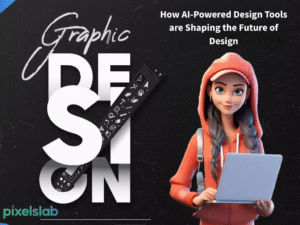
Purpose of Portfolio
A designer needs a portfolio because it serves as a visual resume a body of his best work not only highlighting his technical capabilities but also his best work not only highlighting his technical capabilities but also his creativity , problem-solving skills and design thinking. Showcases Skills: A portfolio is a tangible evidence of what he is capable of doing. Instead of just depending on a resume or an inventory of abilities, a portfolio illustrates actual samples or clients to experience the quality, adaptability, and range of their skills firsthand.
Each designer has their own style, and a portfolio provides them with a place to emphasize that. It reveals their design method, asethetic sensibilities, and method of resolving design issue . This is crucial since design itself can be subjective, and employers or clients want to know how a designer’s style can meet their needs.
Define your Niche/Style
In 2025, creating a portfolio is no longer just about flaunting your work it’s about establishing a specific niche or style that distinguishes you. As a graphic designer, photographer, or digital marketer, your portfolio should portray your strengths, specialized knowledge, and individual style. begin by selecting a niche that supports your skills and interest, such as minimalism in design, luxury brands, or photography genre like portrait or landscape. Feature your strongest work that falls under this niche, being consistent on all projects. Customize the content to demonstrate your creativity while looking professional. A cohesive and clear portfolio not only makes you shine in busy market but also communicate with your target audience so that potential employers or clients know exactly what you have to offer.
Essential Elements of a Portfolio in 2025
About Us
Hello, I’m [ Chanddeep Singh Arora ], a creative content strategist with a passion for storytelling and a desire to assist brands in discovering their voice. I have been in the digital marketing and blogging industry for a number of years, where I create informative, yet compelling content that drives results. I began as an inquisitive writer, and along the way, I’ve developed expertise in SEO, content planning, and digital identity. I am convinced that words can inspire, teach, and connect and that is what keeps me going.
I value authenticity, creativity, and the power of meaningful connections. Whether it’s a blog post or a full-scale content strategy, I’m committed to delivering quality work that aligns with your vision and goals.
Let’s work together to tell your story, grow your audience, and make an impact. Visit Our Website pixelslab.in
This professional introduction reflects your story, expertise, and values as a blog writer, highlighting your experience, passion, and approach to content creation. Feel free to personalize it further!
Showcase of Work: Selecting Your Best Work & Emphasizing Quality
When showcasing your work, sometimes less is more. The point is to highlight your best projects, which demonstrate your skills, creativity, and expertise, not attempt to display everything you’ve worked on. Here’s how to select and display your work effectively:
- Pick Projects That Fit Within Your Niche
Select projects related to the particular niche or style you’ve selected for your portfolio. If you’re a tech content writer, for instance, highlight articles or blog posts on the same subject. Featuring relevant work serves to illustrate your specialized knowledge and makes you an authority in your field.
- Prioritize Quality Over Quantity
It’s far better to display fewer, high-quality pieces than a long list of mediocre work. Only include projects that you’re proud of and that best represent your skills. Each piece should tell a story and show how you’ve solved a problem or met a client’s need, rather than simply showcasing your ability to create.
- Use High-Quality Images
For image-based work, like graphic design, photography, or web design, your images’ quality is important. Make sure the images you submit are high-resolution, well-composed, and web-optimized. A poorly cropped, fuzzy picture can lose you a potential client, so be sure each image is edited and professional.
- Provide Detailed Case Studies
Rather than simply posting a photo or a piece of your work, add context. Develop elaborate case studies that describe the purpose of the project, the problems you encountered, your creative process, and your outcomes. A well-defined case study will provide potential clients with greater insight into your process and exhibit your problem-solving skills.
Project Overview: Begin with a concise background of the project and the client’s goals.
The Process: Divide the steps you followed to accomplish the project. Mention drafts, revisions, and your thinking process.
The Results: Highlight the results, if it’s more traffic, sales, or enhanced brand interaction. Measuring results makes your work authentic and interesting.
- Display Diversity in Your Work
While it’s important to focus on your niche, showing a range of work that highlights your versatility can be a bonus. If you’ve done different types of projects (e.g., writing, graphic design, or content strategy), include a diverse selection that demonstrates your wide skill set while still maintaining consistency in quality.
- Present Work in a User-Friendly Layout
When presenting your work, have it laid out in a manner that’s easy to work your way through. Place similar projects together, keep it neatly laid out, and ensure that each piece is accessible in its entirety. A messy or hard-to-work-through portfolio will be a turn-off.
By choosing your highest-quality work and showing it with context and good visuals, you build a portfolio that not only gets noticed but also establishes trust with potential employers or clients. This method demonstrates that you know the value of quality, professionalism, and clarity in your profession.
At Last
Building an effective portfolio in 2025 is crucial for designers aiming to stand out in a competitive market. By showcasing a curated selection of your best work, demonstrating versatility, and highlighting your process, you present yourself as a skilled and adaptable designer. In addition, embracing modern design trends, maintaining a user-friendly website, and leveraging platforms like Behance or Dribbble can significantly increase visibility. Remember, your portfolio isn’t just a showcase of your finished projects—it’s a reflection of your creative journey and problem-solving ability. Continuously updating your portfolio with new projects and relevant skills will ensure it stays fresh and engaging, helping you secure future opportunities and grow as a designer.

